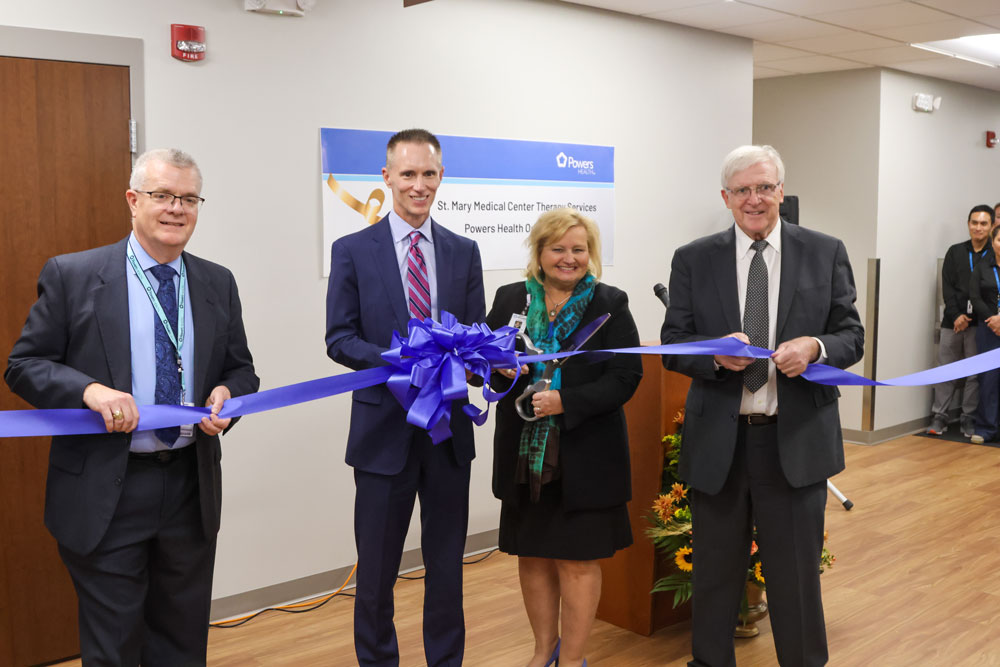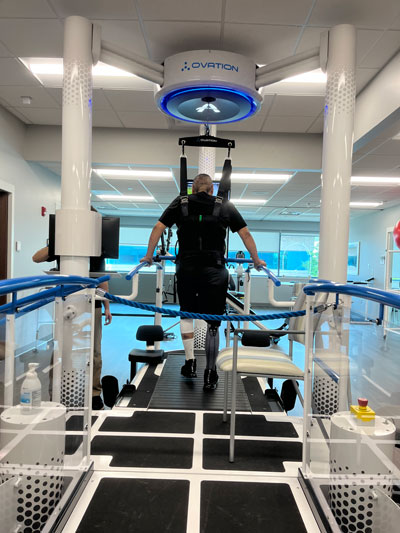
Master your swing
New clinic at Fitness Pointe offers insight on biomechanics of golf
In those few seconds before raising their club, every golfer envisions the precise swing that will send their ball into the perfect trajectory. Then reality hits.
When reality doesn’t match the vision, most golfers try to self-analyze what went wrong and correct it for next time. Now, thanks to the new Golf Swing Clinic offered at Fitness Pointe, golfers can get answers through advanced analytics and professional expertise of a certified golf swing analyst.
Matt Maloney is one of the first to go through the clinic.
“I began experiencing really bad back pain while golfing, and it was getting more difficult to play,” Maloney said. “I went to see an orthopedic surgeon. It turns out, it wasn’t my back, but my left hip. He said I would eventually need a hip replacement, but to help alleviate my current back pain, he referred me to a chiropractor.”
Maloney was referred to Robert Watson, DC, MS, a chiropractor with Community Care Network, Inc. In addition to being a chiropractor, Watson also is certified by the Titleist Performance Institute (TPI), an organization dedicated to the study of how the human body functions in relation to golf swings. As an avid golfer, Watson recognized he could help Maloney find relief with his back pain by modifying the biomechanics of his golf swing. Watson suggested Maloney try the Golf Swing Clinic at Fitness Pointe.
The Golf Swing Clinic combines Watson’s expertise as a TPI-certified analyst with cutting-edge biofeedback technology to evaluate a golfer’s swing and power.
Each golfer’s form is unique, and the screening process completed through the clinic allows Watson to study a golfer’s swing mechanics and biomechanics, physical fitness and health history. From that, each golfer receives a customized treatment plan to help achieve a more efficient swing to reduce the likelihood of injury.
Biofeedback technology at the Golf Swing Clinic uses 3D body tracking hardware known as a K-VEST to digitize and track a golfer’s torso, pelvis and lead arm throughout the golf swing.
“The K-VEST system, through the use of wireless sensors and a computer, tells us details about your golf swing motion that cannot be seen on video or by the naked eye,” Watson said. “We look at the sequence of motion (kinematic sequence) and explain how this, and the other data we receive, can help golfers pinpoint what to work on to improve their swing.”
The Golf Swing Clinic also uses a customdesigned virtual golf studio and performance simulators powered by GC launch monitor technology.
The GCHawk™ launch monitor creates hyper-realistic gameplay that delivers rich textures, 3D grass and foliage, enhanced lighting and more to provide a superior simulation experience.
This full spectrum of information helps Watson navigate the complex world of golf-specific injuries and rehabilitation. It also helps identify any physical restrictions that limit a golfer’s potential.
After using the Golf Swing Clinic over the winter, Maloney now has exercises and information to accommodate the physical changes in his hip and improve his swing. “I was just hoping to be able to keep playing golf,” he said. “Now, not only can I continue playing the game I love, but with the things I learned from the clinic, I might even improve my score!”


